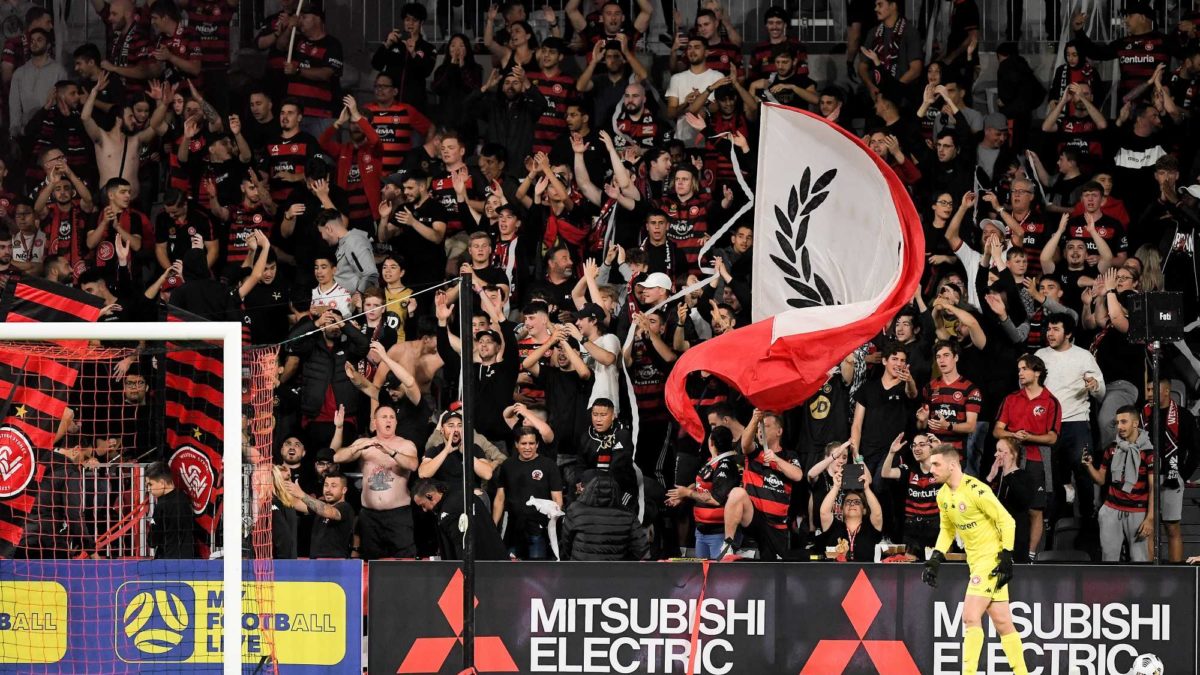
Last Wednesday night, the Wellington Phoenix played their match against the Melbourne Victory behind closed doors.
It wasn’t a private affair due to a COVID outbreak, or a COVID lockdown. The reasoning behind the move was not COVID-related at all.
It was a commercial decision, Phoenix general manager David Dome said, that would “save the club thousands of dollars.”
“We are absorbing the whole costs of playing games in Wollongong for the men’s teams, and it is expensive to open up the stadium because I’ve got to be honest with you, the ticket sales for the men have been abysmal,” Dome told New Zealand media outlet, Stuff.co.nz.
“We’re not even in the ballpark of being able to cover the costs,” he added.
It was a move that was in part induced by the COVID-19 situation, which has prevented the Wellington-based side from operating out of New Zealand for the past two seasons.
But it was also symbolic of a larger issue that has been facing the A-League Men for the best part of a decade.
The competition cannot attract commercial interest or the interest of the fans.
The commodity of eyes has become elusive for the A-League Men, and this season, that has been shown clearly.

(Photo by Matt King/Getty Images)
This has been glaringly obvious to anyone watching or attending matches over the last month, where you’re more likely to find an empty seat than a full one.
Of all the A-League Men matches played over the weekend, the highest recorded attendance was when 7181 people attended the high-flying Melbourne Victory’s loss to the Newcastle Jets.
The rest of the matches were attended by less than 5000 people, with one – the Wellington Phoenix’s 1-1 draw at ‘home’ to Adelaide United – attended by 797 people.
Extend the analysis of attendance figures back to the start of this season, and there have been seven games to break the 10,000-attendance barrier, and one – the Sydney derby in Round 1 – that has broken the 20,000-attendance barrier.
These figures are appalling for a league that is reliant on the fans more than anything to be the main attraction.
Former FFA boss David Gallop said as much as this in 2015.
“Let’s be clear – the fans make the A-League what it is today; a vibrant, exciting competition that is the powerhouse driving the game’s growth in Australia. The atmosphere still gives me goosebumps.”
The A-League Men is in a unique position. It is a competition where the commodity sold by the administrative body is not what we see, it’s what we hear.
And as far as product management is concerned, the A-League Men – in particular the administration led by Gallop – has performed atrociously.
The alienation of fans as far back as 2015, when the Western Sydney Wanderers’ active support group, the RBB, boycotted a match against the Brisbane Roar in protest of the way the game in Australia was run.

(Photo by Mark Kolbe/Getty Images)
It extends right up until as recently as last year, when a member of the RBB was kicked out for not sitting in his seat and their capo received a 12-month ban for swearing.
The poor administration of the A-League Men and the additional presence of exuberant numbers of police has created the perfect brew for fan disinterest and disengagement.
And the numbers showcase this.
During the 2020-21 A-League Men season, ten of the 12 A-League Men teams recorded their lowest seasonal average attendance ever. Only two sides did not achieve this feat.
One was Macarthur FC, who were competing in their first ever A-League Men campaign.
The other was the Central Coast Mariners, who recorded their lowest seasonal average attendance the season before, during the 2019-20 competition.
A further look into the seasonal average attendances of the competition’s biggest sides paints a more troubling picture.
In the five seasons since the 2016-17 season, Melbourne Victory have had a drop of 17,000 average weekly fans, Sydney FC and the Western Sydney Wanderers have had a decrease of approximately 9000 while the Brisbane Roar have had a drop of over 50 per cent in weekly average attendances.
Even with the addition of two new sides, Macarthur FC and Western United, the A-League Men has seen its average attendance drop from 12,294 in 2016-17 to just 5682 during last season.
The figures are torturous for any passionate stakeholder who is desperately gripping on to the hope that the league may be able to return to its early-2010s peak, when active support was alive and thriving, creating a rambunctious attitude in stadiums across the country that was akin to scenes seen throughout European football.
It was a time when atmosphere and fan culture was allowed to grow and mature. It was a time when the attraction off the pitch drew people to the play on it.
It was a time when the league’s hottest commodity was not suffocated, and had not succumbed to draconian police and administrative measures.
It was a time when fading into obscurity was a nightmare and not a reality.